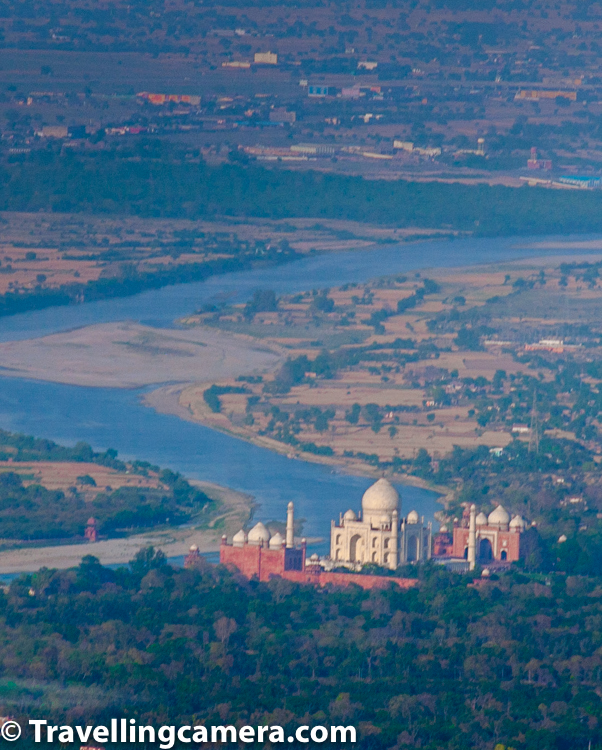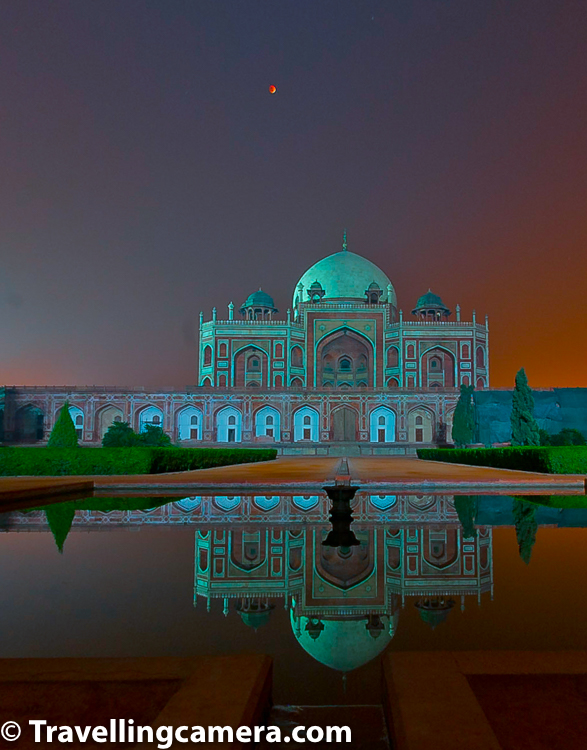Taj Mahal is one of the most visited tourist place in India and popular amongst local as well as international travelers. I have been to the Taj Mahal a few times and came back with mixed feelings, but some of the memories from Taj are still fresh because of certain exceptional experiences around this grand monument built in 1600s. We will get to know more about Taj Mahal in this post, along with details like how to reach Agra, along with other tips to make your experience most enjoyable by avoiding unnecessary hassles & by taking safety measures.
Let's talk about best time of the day to see Taj Mahal. I was checking few reports and it seems that approximately 8 million visitors come to Taj Mahal every year. With simple mathematics, thousands of visitors come to Taj Mahal every day. So my first recommendation is get to ticket counter as soon as possible and try to enter the Taj Mahal campus in very first lot. That's the only way to appreciate this beauty in best possible way when lot of people are not in. It brings lot of difference.
Other related aspect of getting their early is - in winters early mornings are foggy and that adds extra punch to the view. And then you can roam inside the campus till fog goes away and appreciate the beauty of Taj Mahal in clear light as well.
Related Blogpost - Red Fort ( Lal Quila ) - Most popular Tourist Place in Delhi & Architectural marvel of the Country
Let's quickly touch upon how to reach Taj Mahal in Agra :
Nearest Airport : The Agra Airport
Nearest Railway Station : Agra Cantt Railway Station
Nearest Bus Stand : The Idgah Bus Stand
The Taj Mahal in Agra was designated as a UNESCO World Heritage Site in 1983 for being "the jewel of Muslim art in India and one of the universally admired masterpieces of the world's heritage". Taj Mahal is used as an example when we talk about Mughal architecture and a symbol of India's rich history.
Unfortunately none of the photograph in this blogpost gives real feeling of grandness except the one which shows aerial view of Taj Mahal. That tells me that I should plan another visit soon and bring back more encouraging images of Taj Mahal to you all. But I am sure you would want to see the grandness in reality instead of imagining that through photographs.
Entry Ticket Fees for seeing Taj Mahal :
Entry Fee for Indian - 45 Rs
Entry Fee for SAARC and BIMSTEC - 535 rs
Entry Fee for Foreigners - 1050 Rs
*** Additional 200 Rs to see the main mausoleum
Entry Below Children Below Age 15 is Free
Apart from getting entry to the Taj complex which includes exploration of Charbagh garden setup and the central dome. There is an extra fees of 200 rs to see the Taj Mahal main mausoleum. Keep it mind that this is most crowded place as well and you may need to get to long queue, so decide accordingly. I have attempted it once and had to stand in the queue for a long time, and it was not really a very good experience. Later, I didn't bother to take this extra ticket. A ticket for the Taj Mahal mausoleum can be purchased at the time of booking the Taj entry tickets and you can save yourself the hassle of queuing up separately for this.
There are also tickets for Night View of Taj Mahal, which is getting more popular now given controlled number of people can enter into Taj complex on a particular day.
The entry tickets for night viewing can be bought 24 hours in advance. You can buy the tickets from the Archaeological Survey of India office on Agra Mall Road between 10:00 am and 06:00 pm.
Adult Indian tourist night ticket is INR 510
International tourist is INR 750
Children between 3 and 15 years - INR 500
For Night show, only 400 tourists are allowed inside the Taj complex. These 400 are further categorised in eight batches with 50 members each. Nighttime viewing of the Taj is available only five days a month on a full moon night and two days ahead and two days post the full moon, with the exception of Fridays. The night visit duration is 30 minutes between 08:30 pm and 12:30 am.
Above photograph shows a view from one of the gates to enter into Taj Mahal compound. Certainly this doesn't cover everything but gives a view of front part.
The Taj Mahal complex is set around a large 980 feet square charbagh or Mughal garden. The garden uses raised pathways that divide each of the four-quarters of the garden into 16 flowerbeds. Halfway between the tomb and gateway in the centre of the garden is a raised marble water tank with a reflecting pool positioned to reflect the image of the mausoleum. The elevated marble water tank is called al Hawd al-Kawthar. You can't see that tank in above photograph as that's too far from where this photograph is clicked. Look closely at the photograph above and notice lot of people walking just below the Taj Mahal. That would give you a sense about it's size and grandness.
Taj Mahal is built in ~42 acres complex in Agra city of Uttar Pradesh State in India. The Taj Mahal attracts approximately 8 million visitors/tourists in a year.
Related Blogpost - Elegant Jama Masjid - Largest Mosque in Old Delhi & An Architectural Marvel of the country
Timings of Taj Mahal, Agra :
***Please note that Taj Mahal has separate queues for domestic and foreign tourists.
***The Taj Mahal is open for viewing to the general public on all days of the week except Fridays.
***Entry Gates open an hour before sunrise and till 45mins before sunset.
- Western Gate (Main Gate) opens an hour before sunrise and about 45 minutes prior to sunset.
To enter through Taj Mahal Western Gate, you can buy the tickets near Saheli Burj. This is actually the main entrance to the mausoleum. Outside this gate, don’t miss the beautiful red sandstone structure ‘Fatehpur Begum’, dedicated to another of Shah Jahan’s wives.
- Eastern Gate opens an hour before sunrise, and 45 minutes before sunset
Taj Mahal Eastern Gate is another entry gate and tickets are available at this gate itself. Facing Fatehbad, there is a domed tomb here nestled on an elevated plinth, also known as ‘Sirhi Darwaza’.
- Southern Gate is only for Exit
You can only exit from southern gate and no entry is allowed from this gate. Southern gate of Taj Mahal faces the old town, Mumtazabad. There is a tomb here too of red sandstone complete with a rambling courtyard and a dome. The grave is believed to be of a maid of Mumtaz Mahal’s who always kept her company and looked after her.
Above photograph shows view of Yamuna from one of the 4 pillars of Taj Mahal. On the right side of this photograph you see other structures made with Red stone. I have always wished to go to other side of the river to click Taj Mahal but haven't been able to do so. The Taj Mahal is an ivory-white marble mausoleum on the southern bank of the river Yamuna in the Indian city of Agra. It was commissioned by the Mughal emperor Shah Jahan to house the tomb of his favourite wife, Mumtaz Mahal. Taj Mahal also has the tomb of Shah Jahan.
Related Blogpost - Travel makes us wiser : A very interesting experience at Fatehpur Sikri, UP (India)
The construction of Taj Mahal employed approximately 20000 artisans under the guidance of Ustad Ahmad Lahauri who has architected many other monuments in India. Red Fort is one of the others deigned/architected by Ustad Ahmad Lahauri.
The exterior decorations of the Taj Mahal are among the finest in Mughal architecture. As the surface area changes, the decorations are refined proportionally. In line with the Islamic prohibition against the use of anthropomorphic forms, the decorative elements can be grouped into either calligraphy, abstract forms or vegetative motifs. Throughout the complex are passages from the Qur'an that comprise some of the decorative elements.
Related Blogpost - One day Road-Trip to Bharatpur Birds Sanctuary from Delhi : Winters Special
Above photograph is very special for me which was clicked from my first helicopter ride, when I was going to Morena for an Aerial photo-shoot. It's not a sharp image because of lot of vibrations in a helicopter and I had no option but to click with hand-hold camera on a not so clear day. Irrespective of all that, I love this aerial view of Taj Mahal, huge green patch in front of it and Yamuna flowing behind it. And notice that Yamuna is looking blue in this aerial shot of Taj Mahal. Certainly this photograph is edited but you see the colors which were present, may be a little more saturated.
Related Blogpost - Fatehpur-Sikri - The forgotten glory
Are you wondering what this non-Taj photograph is doing in this post? Above photograph shows Humayun's Tomb which is in Delhi and a smaller version of Taj Mahal & in red stone.
The Taj Mahal is inspired by design traditions of Persian and earlier Mughal architecture. Some of the key examples were Gur-e-Amir (the tomb of Timur in Samarkand), Humayun's Tomb in Delhi which inspired the Charbagh gardens and hasht-behesht (architecture) plan of the site, Itmad-Ud-Daulah's Tomb (sometimes called the Baby Taj), and Shah Jahan's own Jama Masjid in Delhi. While earlier Mughal buildings were primarily constructed of red sandstone, Shah Jahan promoted the use of white marble and this monument looks stunning during full-moon night.
Thousands people coming every day to see this Magnificent architectural piece and the trend is increasing with time. During your visit, if you wish you know about it's history and stories associated, we recommend that you take an official guide because right information during explorations make your visit more memorable.









.jpg)
Comments